Arts & Literature _|_ Issue 6, 2017
Poacher’s Pilgrimage – A Journey with Alastair McIntosh
Jim Griffin reflects on one man’s attempt to reconnect with the sacred landscape and ancient Celtic traditions of the Western Isles
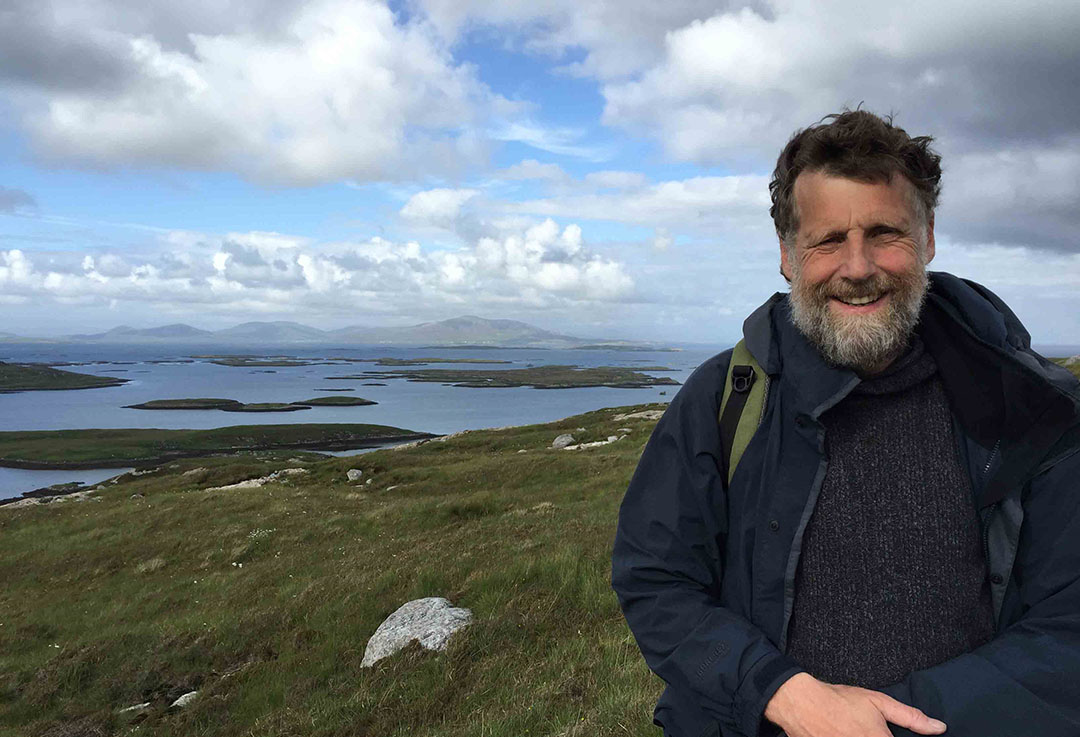
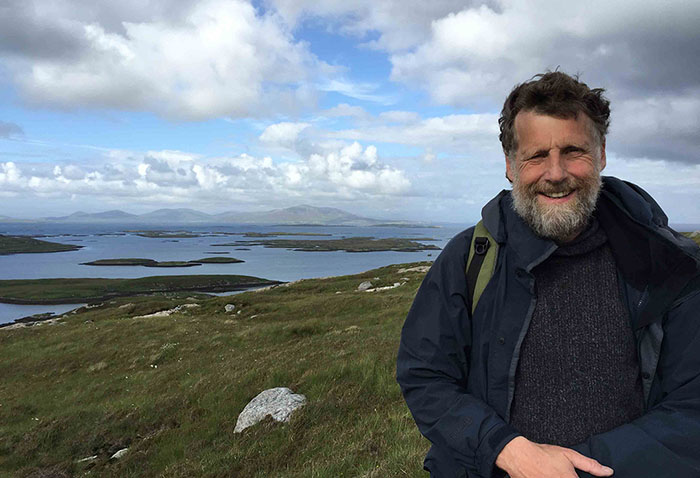
Poacher’s Pilgrimage – A Journey with Alastair McIntosh
Jim Griffin reflects on one man’s attempt to reconnect with the sacred landscape and ancient Celtic traditions of the Western Isles
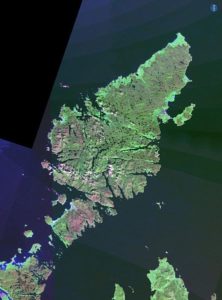 In his recent (2016) book Poacher’s Pilgrimage: An Island Journey, Alastair McIntosh [/] – poet, theologian, environmental activist, prophet of a new Scotland and a new world, committed Quaker “of the radical 17th-century ‘Ranter’ tendency” and interfaith traveller – gives an account of his pilgrimage journey in the Outer Hebrides, across the Isles of Lewis and Harris, in 2009. Earlier this year he gave a talk, based on his journey, at the Edinburgh International Centre for Spirituality and Peace [/]. The following reflections are a dialogue with the views and the vision that he explores.
In his recent (2016) book Poacher’s Pilgrimage: An Island Journey, Alastair McIntosh [/] – poet, theologian, environmental activist, prophet of a new Scotland and a new world, committed Quaker “of the radical 17th-century ‘Ranter’ tendency” and interfaith traveller – gives an account of his pilgrimage journey in the Outer Hebrides, across the Isles of Lewis and Harris, in 2009. Earlier this year he gave a talk, based on his journey, at the Edinburgh International Centre for Spirituality and Peace [/]. The following reflections are a dialogue with the views and the vision that he explores.
The vision that McIntosh places before us shows a way of seeing the world and living within it that transcends our ordinary everyday perceptions. At the same time, what he has to say is urgently practical. In his earlier work on climate change, Hell and High Water, he draws a stark and fairly desperate picture within which there are no grounds for optimism regarding the future well-being of our planet. What he does say, however, is that we have the capacity for hope, and hope reveals the world to us in a different manner, through a spiritual vision that supports and sustains action. It is such a vision that lies at the heart of Poacher’s Pilgrimage. (To hear Alastair himself talking about his journey, see video [/].)
Ancient Roots, Ancient Wells
.
McIntosh grew up on Lewis, having moved there with his family at the age of four, and in part the pilgrimage he describes in the book is a return to people and places he knows well. In that sense, it involves also a deeply inward journey, an exploration of memory and of a self that is rooted in a particular landscape and community, within which the divine and its other world are easily sensed. Parts of Argyll and the Western Isles are often referred to as ‘thin places’ – places where the separation between the divine and the human easily breaks down, where one can be transported to a place and a climate that is beyond the day-to-day. McIntosh finds and muses on that place and that transport throughout his journey.
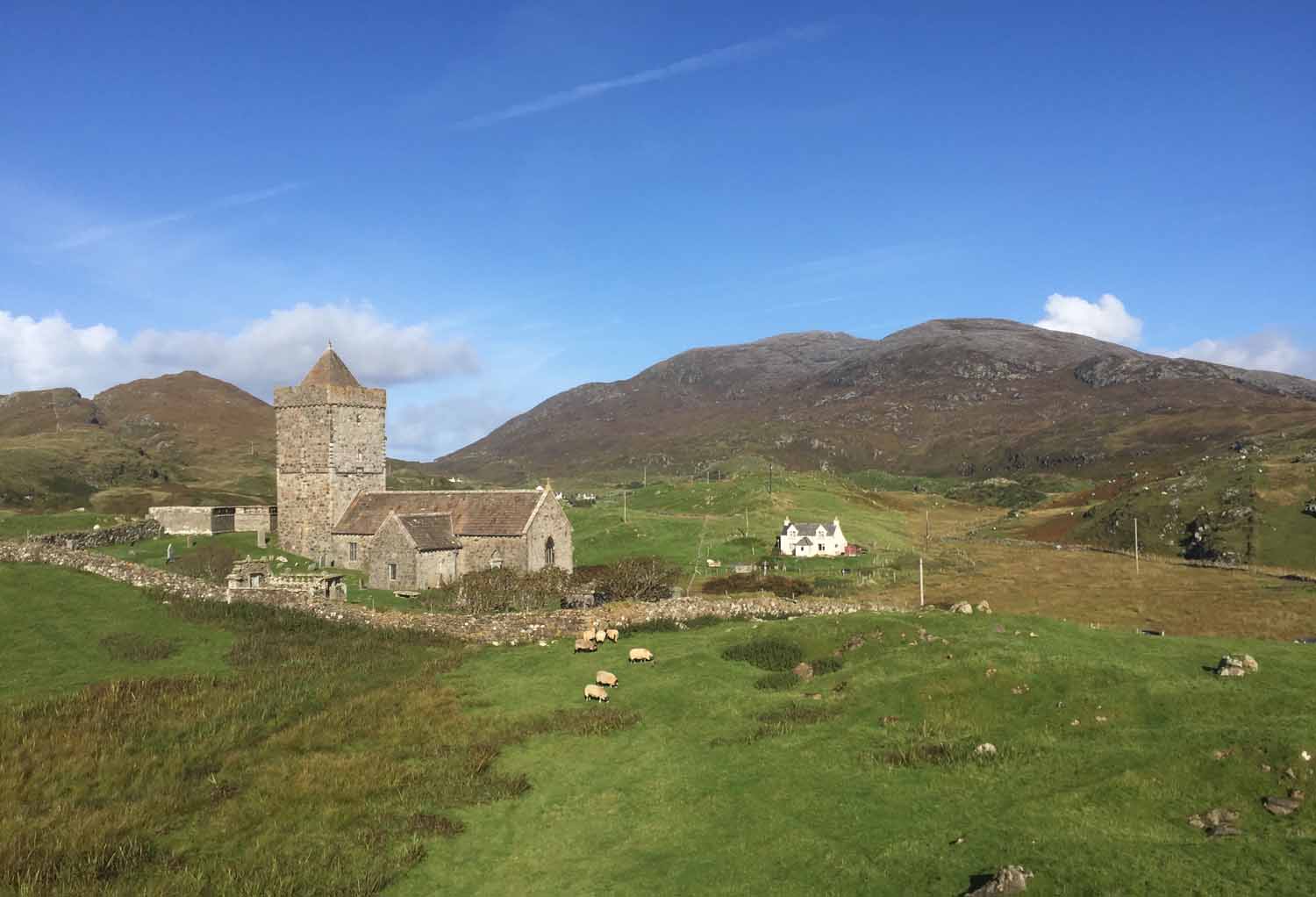
St Clements Church, Isle of Harris, at the start of the pilgrimage
What engages him is a deep search, which is not unlike the vision quest of native Americans, or the walkabout of aboriginal Australians. He is looking for something that he, and a whole culture, has lost – and needs to rediscover. The tone for it all is set by his opening epitaph, an old Gaelic poem, ‘An Tobar’ (The Well):
Resting in the village there’s a little well
and the grass hides it,
Green grass in sap closely thatching it.
I heard of it from an old woman
But she said: “The path is overgrown with bracken
where often I walked with my pail
and the pail itself is warped…”
“Nobody goes to that well now,”
said the old woman, “as we once went,
when we were young,
though its water is lovely and white.”
And when I looked in her eyes through the bracken
I saw the sparkle of that water
that makes whole every hurt
till the hurt of the heart.
“And will you go there for me,”
said the old woman, “even with a thimble,
and bring me a drop of that hard water
that will bring colour to my cheeks.”
I found the well at last,
and though her need was not the greatest
it was to her that I brought the treasure.
(Preface, xiii–xiv)
The presence of sacred wells across Harris and Lewis is a central reference point in McIntosh’s journey. He visits some of them, and notes the ways in which they were such a strong feature of the early Celtic Christianity of the islands, and indeed part of a sacred landscape that had pre-Christian origins, underpinning the life of the Celtic Christian church, and in some fashion surviving the trials of the Protestant reformation. He quotes at one point from Dr Finlay Macleod’s study, The Healing Wells of the Western Isles:
Through the wells we are able to see vestiges of customs which were at one time widespread throughout the land. Water was seen as a live and powerful element, and people were drawn to it although they were also in awe of it. The knowledge they had was knowledge of how they could attain health and wholesomeness through the power associated with water and wells. Although the nature of people’s information has changed since those times, there are still some remnants of ancient knowledge in existence, and some of the wells are still known, bearing witness to thought processes that are today not easy to penetrate (p. 22).
In a moment early on in his journey, McIntosh describes one of these – Blacksmith’s Well (Tobar a’ Ghobha) – an old place whose whereabouts have been forgotten. After speaking to an islander who thinks she remembers roughly where the well is, McIntosh goes in search of it, and indeed finds it. The rediscovery of the well, and of the rich water that can be drunk from it, brings great joy. Clearly, the well here, and the search for it, offers us the water of life and the slaking of a spiritual thirst.
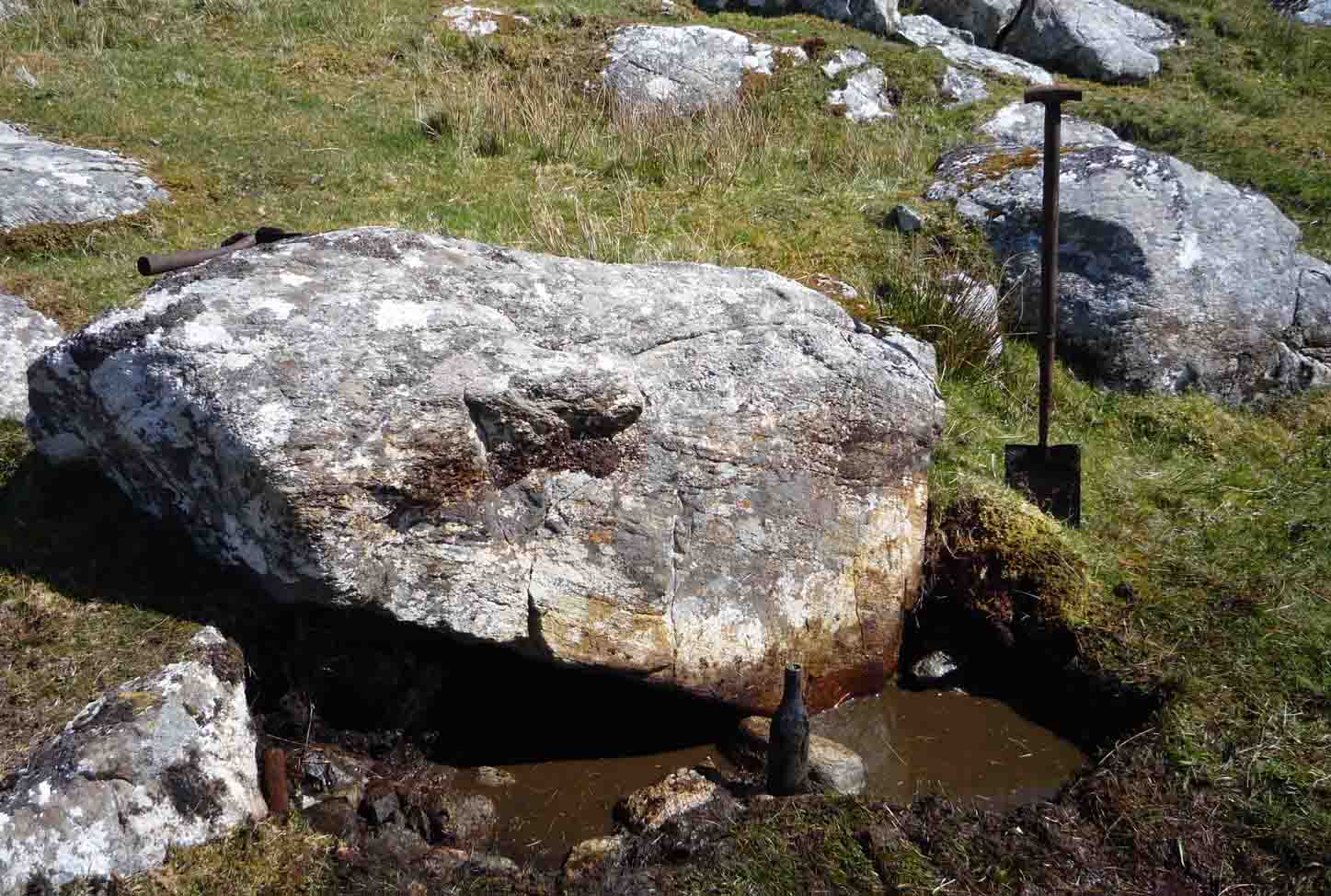
Blacksmith’s Well, Isle of Harris
A Sacred Landscape
.
It is not, of course, just the wells that mark and identify the sacred landscape. There are old stone monuments and abandoned chapels, sacred sites, hillsides and rivers, places populated by the sith, or faerie-folk, and others, who make themselves known at times and in ways of their own choosing. Referring to an earlier period in his life, when he had taken a group of ecology students to Lewis for fieldwork, McIntosh remembers saying to them: “Faerie is an imaginal world. It’s more a metaphor than a reality”. For this he was rebuked by an Irish student in the group, a woman from County Clare in Ireland:
“No!” she retorted sharply. The ‘folk’ to her were in no sense imaginary… “They’re a different order of reality”, she insisted. Their world runs parallel to ours, and quite frankly, she thought that my high-brow claptrap was disrespectful. If I carried on like that, she said, they’d withhold their revelations from me (p. 113).
The other world that McIntosh identifies here is both different from the ordinary human world, and perhaps not always sympathetic to it. Indeed, it can at times seem threatening, as one story indicates. In his travels, McIntosh passes near Loch Langabhat on Harris. On the loch there is a small island, Eilean na Caillich; the reference here is to the cailleach, the holy and wise old woman central to Celtic tradition. The island is named after a nun who built her hermitage there, the ruins of which survive. McIntosh tells us that the late BBC journalist Finlay J. MacDonald, in his book Crotal and White, describes a visit there as a child. Forbidden by his parents to go near the place, he decided nonetheless to see what mystery it held. Crossing to the island with his dog, he saw the animal suddenly become terrified:
The hairs of his tail and ruff are standing on end like the bristles of a brush, and he’s baying like a beast demented (p. 37).
Pressing on regardless, MacDonald reached the island and spotted the hermit’s cell. Then he heard a voice –
Or rather, felt a voice. It came from my ears but at the same time from within my head. It said “Put off thy shoes from off thy feet for the place whereon thou standest is holy ground” (p. 38).
Terrified, he turned and ran for home as fast as he could. Subsequently he learned that many other islanders had had a similar experience, and that the same admonition was heard by all: “Put off thy shoes from off thy feet for the place whereon thou standest is holy ground”.
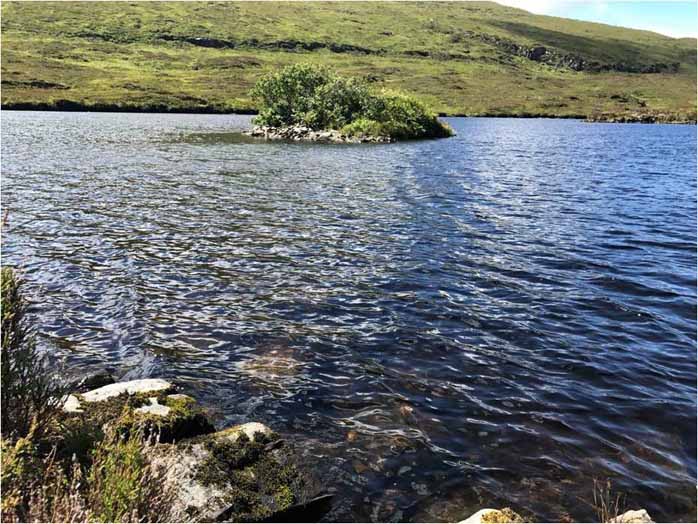
Eilean na Caillich on Loch Langabhat, Isle of Harris. Photograph courtesy of Jason Reese
This sense of the land as sacred, as in some way constituting the body of the divine, and offering, through particular sacred spaces, points of human entry into a deep divine presence, is common to many traditions. For traditional native Americans – non-agriculturalists – the thought of cultivating the land, breaking open the soil, was considered an assault on the body of the Great Spirit. In the West the tradition of building Christian churches on an East–West axis was not just a matter of having an orientation to Palestine, the Holy Land, but also a way of acknowledging, in the diurnal movement of the sun, the gift of divine light and creative energy spreading over the land. And in China, the art of feng shui is the practice of recognising the powerful spiritual presences evident in nature, marking a vital resource for shaping human life within the contours and living folds of the landscape.
In all of this, the vital point is that reference to spiritual powers and energies is an acknowledgement of realms which exist independently of human life and knowing. The word ‘independent’, though, should be used with some caution: what is at stake is actually a deep sense of ‘inter-dependence’ between the human and the larger spiritual world. McIntosh feels that this sense of inter-dependence has been significantly forgotten in our culture, and he sets out to re-discover and re-articulate it for us in a vastly expanded ecology. So, when he speaks of ‘faerie’, he is speaking of real presences, in the same way that Rilke did in speaking of ‘angels’ in the Duino Elegies [/]. Rilke recognised that the word ‘angel’ has suffered a deeply diminished meaning in the West, and emphasised that his angels were kin to the powerful angelic figures of Islamic thought who are real presences – powerfully energetic beings who inhabit a different dimension of reality. Similarly McIntosh’s fairies are no whimsical fancy but the powerful beings of Celtic thought who occupy the world alongside us.
Wilderness and Community
.
Traditionally a certain way of life was lived on Harris and Lewis that responded to and incorporated a living sense of the sacred into the everyday. The changing seasons; the patterns of weather; the movements of hare and deer; the milking of cattle; childbirth – all these were portals and pointers to a divine presence. At one point McIntosh spots a blue mountain hare. Blue hares are the only ones truly native to Britain, and he notes:
Julius Caesar said the Celtic Britons held them to be sacred. She – as gendered in the folklore – is a witch disguised. She, the true nature wild and free. She, the shape-shifting shaman – Is she human? Is she animal? Does it matter? – whose nest is called a ‘form’, and whose spiritual form is the walker between the worlds (p. 35).
While the presence of the sacred was in many senses an omnipresence, there were also appropriate boundaries to be respected. Hare, deer – and the spiritual world they carry with them – belong to the wilderness and, as John McInnes (formerly of the School of Scottish Studies at Edinburgh University) explains:
Wilderness is a fundamental concept in Gaelic tradition…the distinction between humanised land and non-humanised land… The wilderness, being outside the normal boundaries of convention and order, was associated with the supernatural. The deer was the creature most strongly associated with the wilderness… The deer were believed to be the livestock of the fairies, and the fairies themselves represent in many ways the powers and dangers of the wilderness (p. 148).
Living in close proximity to and engagement with the natural world – the wilderness, the sacred – was what held the island communities together. Signs given from the wild allowed communities to orient themselves, and any transgression of boundaries was taken with the utmost seriousness. McIntosh quotes McInnes again as the latter recalls once having seen a wild hind grazing within the village bounds:
Those who could read the signs realised that the natural order was being overturned and said…“This is an omen of war”. Not very long after the Second World War began. That sighting, that metaphor of order invaded by the wild, helped those who witnessed it to arrange their experience (p. 148).
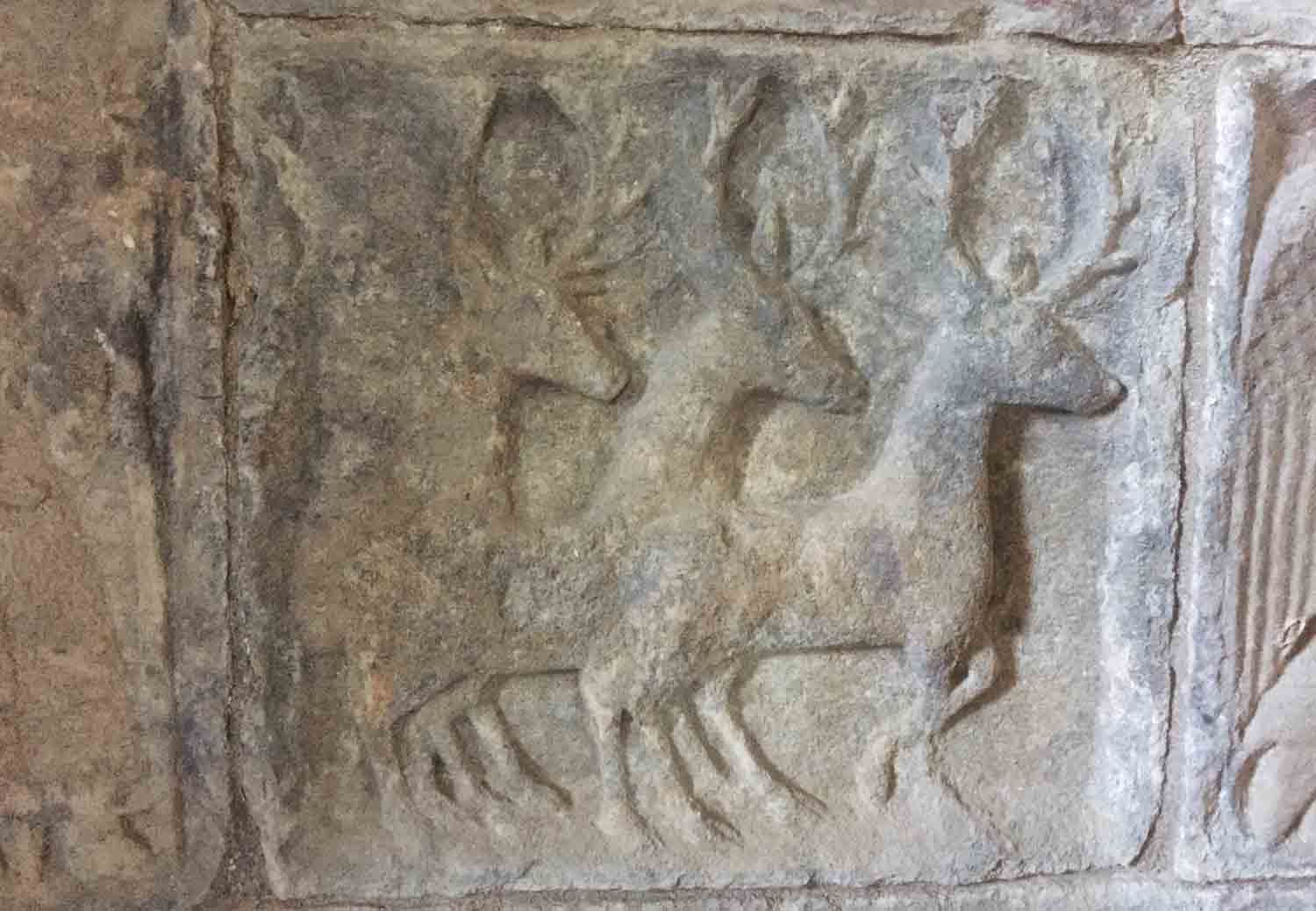
Detail from the tomb in St Clement’s Church of Alasdair ‘Crotach’, 8th chief of the MacLeods of Harris and Dunvegan, completed 1528
As McIntosh explores, and in a sense resurrects, the views and values of the Celtic, and Celtic Christian, world, so also does he chart the loss of much that was held dear. The loss is progressive and cumulative. Protestantism, with its ban on pilgrimages, its destruction of religious sites, and its emphasis on the presence of God in scripture alone – rather than in a divinely created world – ushered in a major shift in religious sensibility. As we shall see, McIntosh readily acknowledges what has been of value in the Presbyterian tradition, but he is keenly aware of ways in which that tradition sought to replace the sense of a sacred landscape with a view of the land as a resource to be used and managed.
This perspective was rendered far more disruptive with the arrival of landlords who were granted ownership of tracts of land, both as reward from the Crown for services rendered and as a means of controlling the local population, as well as a way of raising revenue. As with the later Highland clearances, people were forcibly removed from their homes, with dwellings and whole communities destroyed in the process.
In 1599, Lewis was wrested from traditional clan control. King James VI of Scotland…granted a band of venture capitalists from Fife a colonial charter for “the conquering of the Lewis…by rooting out of the barbarous inhabitants…void of all religion and humanity”…the ‘Fife Adventurers’ were granted a Commission of Fire and Sword; namely to perpetrate “slaughter, mutilation, fire-raising and other inconveniences” (pp. 159–60).
Later, in the 19th century, Lewis was used “as a breeding ground for soldiers for the Empire”. Press gangs were deployed, whilst
… whole villages saw their men scattered to the hills. Mothers and sweethearts were held with bayonets to their breasts as their sons and lovers were marched off to colonial wars across the globe and, in the case of one village that perhaps was not untypical, only one ever came back (p. 161).
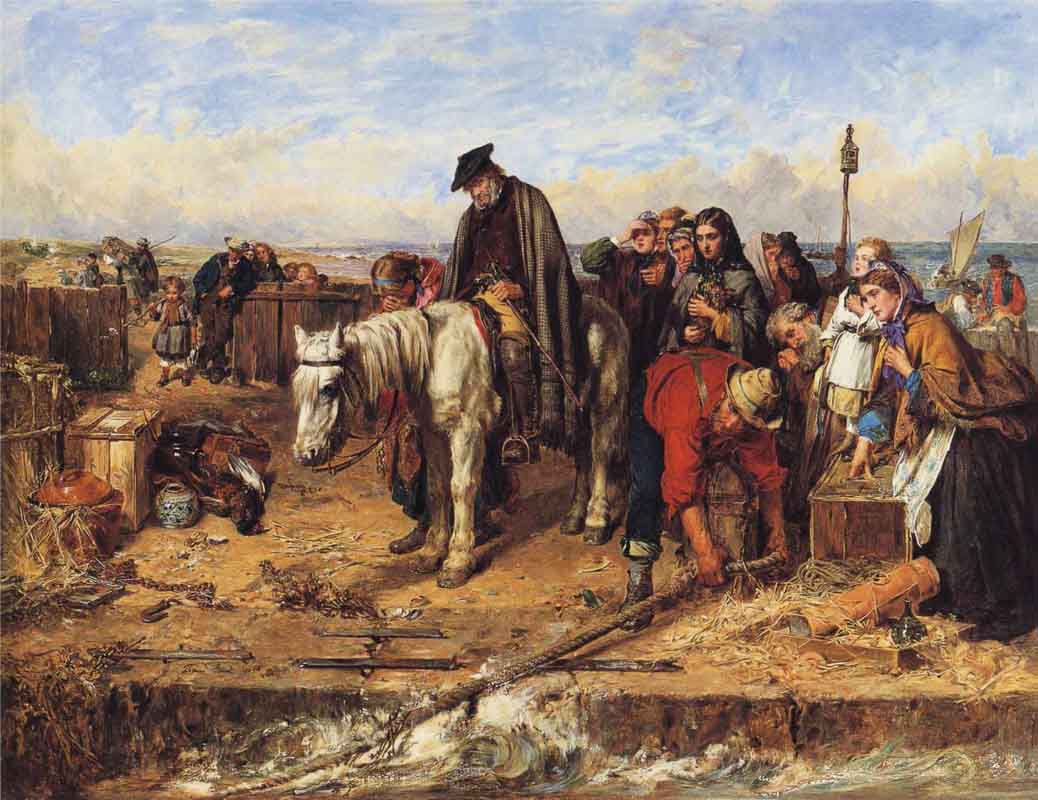
‘The Last of the Clan’ by Thomas Faed. © CSG CIC Glasgow Museums and Libraries Collections
McIntosh laments the terrible destruction involved in these events, “the richness of community that has been lost”, and the “resulting poverty, these days more psychological than material”. He speaks of the large estates coming to be run “by, and for, an alien class of people who had a very limited idea of what it meant to be a connected human being.” And he commends the work of Alexander Carmichael who, in his Carmina Gadelica, collected in the 19th century the songs and hymns that still carried a sense of an old but disappearing way of life:
No wonder, that Carmichael had described the songs and prayers that emanated from such a way of life as: “singularly chaste, beautiful, and elevated” (p. 161).
It would be tempting to quote Carmichael at length, but one poem might stand to give a flavour of how the traditional islanders lived in, and responded to, their world. We have here the poem-prayer that he entitles ‘The New Moon’:
She of my love is the new moon
The King of all creatures blessing her;
Be mine a good purpose
Towards each creature of creation.
Holy be each thing
Which she illumines;
Kindly be each deed
Which she reveals.
Be her guidance on land
With all beset ones;
Be her guidance on the sea
With all distressed ones.
May the moon of moons
Be coming through thick clouds
On me and on every mortal
Who is coming through affliction.
May the virgin of my love
Be coming through dense dark clouds
To me and to each one
Who is in tribulation.
May the King of grace
Be helping my hand
Now and for ever
Till my resurrection day.
(Carmina, pp.288–9)
Connectedness
McIntosh’s sense of, and passion for, what it is to be “a connected human being” drives all of his work – perhaps particularly his work on land ownership and on environmental issues. By ‘connected’ he means connected to the land, to the weather, to the spirits and the animals, and to each other. In his earlier study Soil and Soul, he covers his involvement in two major campaigns: the community purchase of the island of Eigg, and the prevention of a major quarrying project on Harris at the “iconic mountain, Roineabhal”. He returns to Roineabhal during his pilgrimage:
I’m on the flanks of Roineabhal. The slope rises sharply upwards as a moonscape to my left. This peak, reclining out of view, has meant so much to me. We’d fought a battle in the 1990s. It stopped the mountain from being turned into the biggest roadstone quarry in the world. For sixty years, its belly would have been ripped out by thirty-six tons of explosive a week. Ten million tons of rock a year, crushed for paving motorways in the already over-developed south (p. 34).
Part of his campaign at Roineabhal [/] involved bringing over from Canada the War Chief of the Mi’Kmaq people, Stone Eagle, who had campaigned successfully against a proposed superquarry on Kluscap, his people’s sacred mountain in Nova Scotia. Stone Eagle’s testimony to the inquiry set up to consider the proposals for Roineabhal played a large part in the decision to halt the project. Thus McIntosh points out that we can have “connected human beings” across cultures.
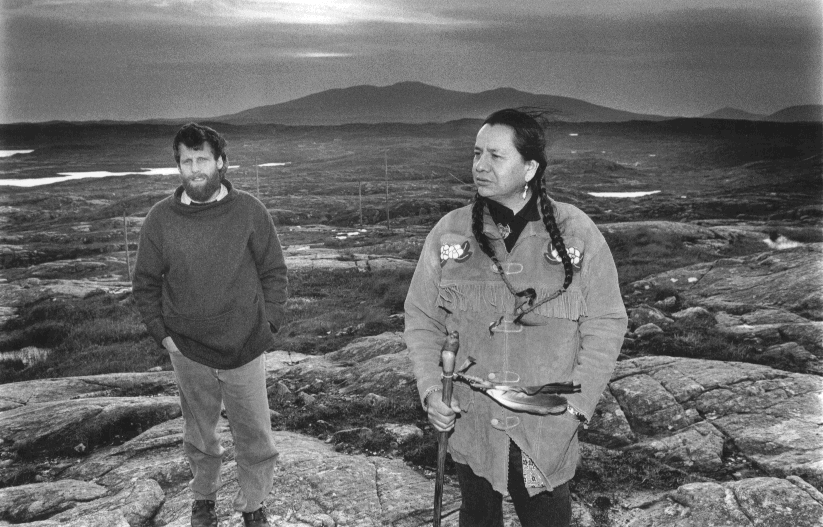
Alastair before Mount Roineabhal, Isle of Harris, with the (now retired) Mi’Kmaq Warrior Chief and Peace Pipe Carrier, Sulian Stone Eagle Herney. Photo: Murdo MacLeod, The Guardian, 1994
Perhaps the most interesting connection arising from the Roineabhal campaign, however, is the one McIntosh forged with Lafarge, the French company that took over management of the proposed work. Impressed by the campaign, Lafarge decided to abandon the project, whilst at the same time inviting McIntosh to advise on their ethical and environmental panel, something that he agreed to do in an unpaid capacity. The ability to take a larger view; the readiness to work constructively with those previously seen as opponents; the determination to find the good in another’s viewpoint: all of this is a central characteristic of McIntosh’s approach to life. The combination of passionate engagement with his own causes, and his readiness to hear the views of others, gives his writing an extraordinary suppleness and intensity. No one is dismissed.
An example of this is his work with senior members of the military on non-violence and the ethics of warfare. This is a motif which runs throughout Poacher’s Pilgrimage. In fact, he started his pilgrimage across the island immediately after a series of meetings in Europe with NATO, which, since 1997, has invited him to give an annual series of lectures to their staff:
I’ve dragged war with me because I’d had it so much in my face before I left, just back from speaking to the soldiers and the diplomats. When I speak at staff colleges, I’ll be in an auditorium with anything from thirty to four hundred serving officers… I’ll maybe start by acknowledging that, so far, nobody has managed to rid the world of war with nonviolence. But neither so, with violence. We can proceed from the basis of such mutual deficiency… I find that there’s a very thin line between the principled soldier and the principled pacifist. Both see peace as the end, but differ in the means (pp. 123–5).
It is testimony to the deep integrity of McIntosh’s approach that, as a pacifist and an ardent explorer of non-violent solutions to problems of conflict, he is able to engage with – and be taken seriously by – men who are trained for war, and have often survived horrendous experiences. These men have shared their confidences with him. He speaks of one soldier:
He had hovered in the background amongst all the buzz of activity until we could be momentarily alone, then closed in and announced, with an air of burning urgency: “I just want to say that I’m just back from Afghanistan… and I feel… defiled” (p. 126).
With a sudden surge of engaged energy, McIntosh found himself saying that:
… whatever it was that he might have done or seen, it was forgiven. Point blank. Forgiven. “Now move on, and live the rest of your life – undefiled” (p. 126).
More difficult to manage in some ways were the responses received when McIntosh put to various individuals the blunt question: “Have you ever killed?” One officer judged it not a fair question, before answering yes. Another, having answered yes, and then being asked how it made him feel, replied: “Gut-wrenching”. Another, answering the same question, replied: “Satisfied”, before recounting one truly awful situation he had endured when dealing with the Taliban. McIntosh then suggested to the others that they ask him whether he had ever killed, and offered this comment:
You see, I’m a killer too. Every time I get in the car, or on a plane, burning oil that’s been fought for, poisoning the planet. Who can really tell?
Goddammit! Maybe even every time I don’t do what you do.
We’re all complicit. All in this together. All so very human ” (p. 130).
Being connected human beings, being truly interconnected, involves at times acknowledging some hard and painful truths. The stories that he tells of his NATO work interweave his narrative in Poacher’s Pilgrimage, and serve as a counterpoint to accounts of the historical violence suffered by the inhabitants of Lewis and Harris, and by the islands themselves.
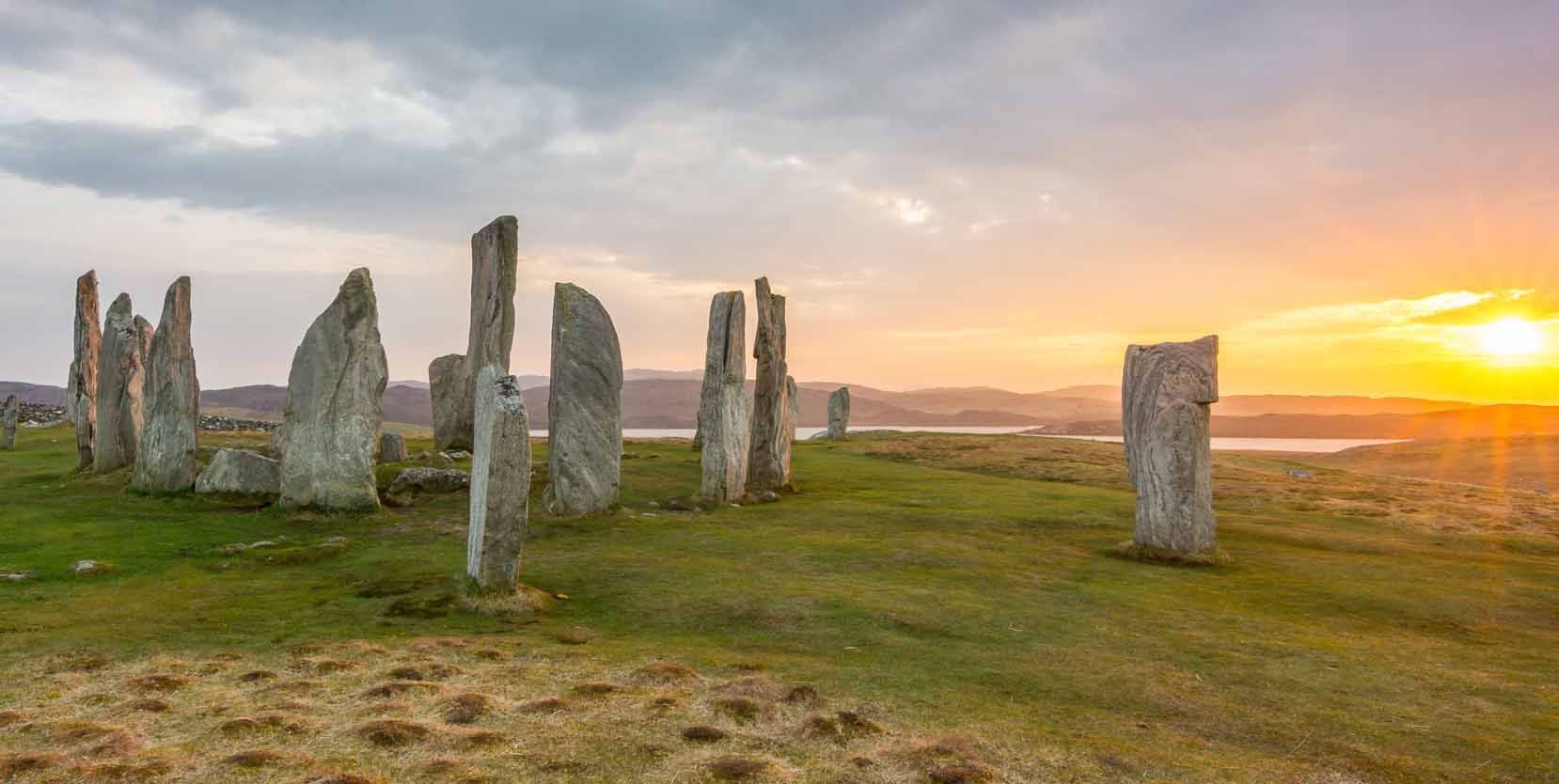
Callanish Stones, Isle of Lewis. Photograph: Chris Combe from York, UK (Callanish Stones 2), via Wikimedia Commons
Ardent Desire
.
McIntosh’s generosity of spirit towards others is further evident when he acknowledges the good to be found within the Presbyterian life as lived on the islands. A pearl can be found in this tightly closed shell. He comments that:
For all its conservatism these days, I can’t help but feel a soft spot for the Free Church. It was the home of my Highland ancestors and the main denomination of the island folks who raised me (p. 221).
Deciding, on the Sunday in his pilgrimage, to attend the service at Callanish Free Church, he listens to a sermon that has him pulling out his notebook and recording what he hears. Part of what holds him is the radical directness of the Christian message as it is presented. Partly also it is the sheer poetry of the Hebrew prophets. The service includes a passage from Job:
… but ask now the beasts
and they shall teach thee;
and the fowls of the air,
and they shall tell thee.
Or speak to the Earth,
And it shall teach thee…
McIntosh comments:
… because “the soul of every living thing, and the breath of all mankind” is held in God’s hands. The minister laments the fact that Job’s full power of Hebrew poetry is lost in translation. The prophets often turned into poets when doing their most full-on stuff… Job shows that God is utterly involved in the unfolding of the Creation… “By him all things consist ” (p. 225).
One could see McIntosh himself as one of these prophet-poets. And in discussion with the minister, Callum Macdonald, and others, over lunch after the service, he intimates another part of himself. Consideration had turned to the meaning of the Gaelic word miann, which is said by the old people of the island to be the only quality in the human heart which the Devil cannot counterfeit.
You could translate it as “ardent desire”, Callum explains. “The ardent desire for God (p. 227).
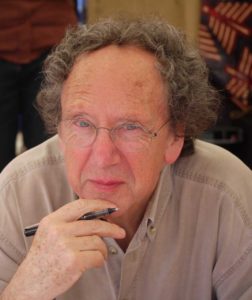 It is, I think, this ardent desire for God that grounds and moves McIntosh’s pilgrimage, as it does his projects and his life. And here we can perhaps draw a contrast that will sharpen our sense of the particular spiritual journey that McIntosh makes across the Western Isles, and what is at stake in it. The contrast is with his compatriot, the poet Kenneth White [/].
It is, I think, this ardent desire for God that grounds and moves McIntosh’s pilgrimage, as it does his projects and his life. And here we can perhaps draw a contrast that will sharpen our sense of the particular spiritual journey that McIntosh makes across the Western Isles, and what is at stake in it. The contrast is with his compatriot, the poet Kenneth White [/].
Having as a young man chosen ‘exile’ in France, White has created a remarkable poetic world, set within a frame of reflection that he terms ‘Geopoetics’. White’s work has been of continuing deep importance for McIntosh, as is evident in various sections of commentary in Soil and Soul, and it provides a bedrock to the spiritual landscape that he traverses. But while White is also on a spiritual journey, it is along a path – The Bird Path, to take the title of his collected longer poems – that is significantly different from the one McIntosh follows. White sees himself leaving the past and journeying on and out beyond our culture, beyond what we have known and lived so far, beyond humanism, living as a spiritual and cultural nomad. He identifies himself with the poet Ovid in his exile:
I’ll have to be going farther
into that night
get further into
this new space
follow right through
the transhuman road
find, who knows, the source
of another light.
(The Bird Path, p. 40)
White shares with McIntosh a sense of the spiritual emptiness of our culture therefore, but he travels as a solitary pilgrim out beyond the human world and into the world of the sea and the coast, the woods and the mountains. He delights in the language of rocks and trees, following the ‘bird path’ and moving on into a world that bears the stark simplicity of a Zen garden; there is no romanticism here, no cultivated garden, but rather a series of found gardens, still points of entry into the world’s emptiness, analogues of found poems.
McIntosh’s journey, as we have seen, is markedly different. Both he and White are interested in Buddhism, but if White is drawn to the vision of emptiness centrally enunciated within the Mahayana tradition, then McIntosh is drawn by the abundant spiritual aliveness of the world, the liberated energy that is celebrated in Vajrayana Buddhism. And where White is a solitary traveller, McIntosh, while travelling alone, rejoices in the lives and the stories of islanders past and present. As with Chaucer’s pilgrims, his journey across the physical terrain is marked also by forays into a richly human landscape that, though at present diminished, still lives on.
As McIntosh’s journey draws to a close, we come again across the image of the well. There is a sadness, and an outrage, to be acknowledged in the fact that, in relatively recent years, some wells have been deliberately placed beyond use, sealed off or poisoned. Others, as we have seen already, have simply been forgotten. But McIntosh wishes to reclaim, and re-instate, the wells themselves, and the richness of what they offered, their connections with each other in a sacred landscape, and the interconnected human community they nourished. In this context he notes that a small but subtle change is underway, the ground of hope that he adheres to. He speaks to an old island friend, Kenny:
“But the wells”, I ask. “You said they’re coming back?”
“It’s a remarkable thing,” he replies, “but in the last five years, as I’ve gone from door to door on my milk round, meeting a complete cross-section of the island, I’ve heard more people talk about old wells than in the whole of the rest of my life.
“You see, people are yearning for a connection with the past. Wanting to bring back control into their lives.
“So, yes. There’s been people opening up their wells again and drawing water… And I’ll tell you something else. I’m noticing, these days, that whenever people hear about a neighbour reopening a well, they get excited.
“Very excited indeed ” (pp. 234–5).
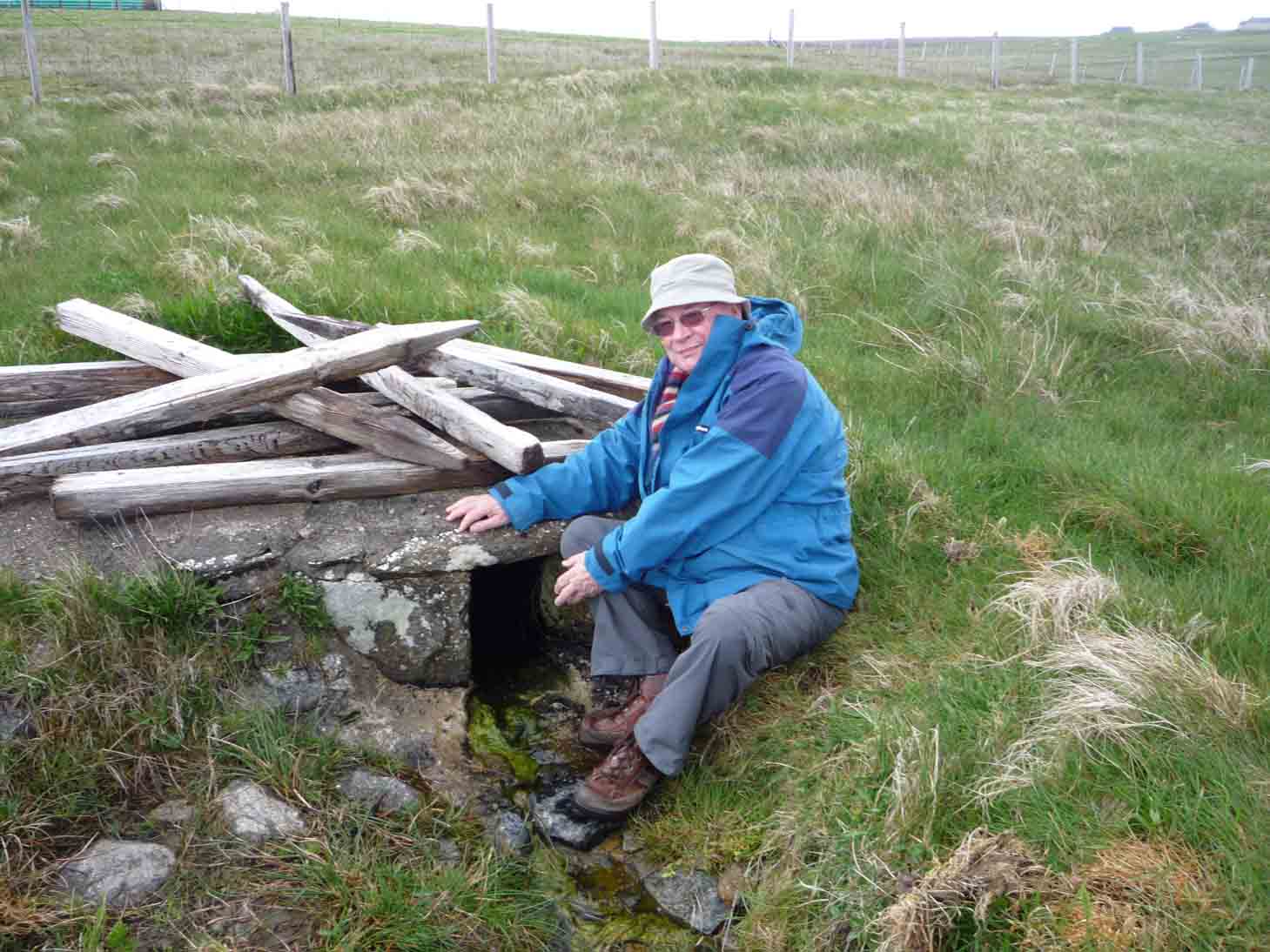
Dr Finlay Macleod of Shawbost at St. Bridgit’s Well, Isle of Lewis
Image Sources (click to open)
Banner picture: Alastair McIntosh on North Uist, with Mount Roineabhal on the Isle of Harris behind.
First insert picture: Aerial View of the Isles of Harris and Lewis: Photograph: NASA Landsat 7 image.
Second inset picture: Kenneth White. Photograph: Esby (talk) 16:10, 31 May 2009 (UTC) (Own work), via Wikimedia Commons.
Unless otherwise stated, all other photographs are courtesy of Alastair McIntosh.
Other Sources (click to open)
Books by ALASTAIR McINTOSH:
- Poacher’s Pilgrimage: An Island Journey, Edinburgh: Birlinn, 2016;
- Rekindling Community: Connecting People, Environment and Spirituality, Bristol: Green Books, 2012;
- Hell and High Water: Climate Change, Hope and the Human Condition, Edinburgh: Birlinn, 2008;
- Soil and Soul: People versus Corporate Power, London: Aurum, 2004.
FINLAY MacLEOD: The Healing Wells of the Western Isles, Isle of Lewis: Acair Ltd., 2000.
FINLAY J. MacDONALD: Crotal and White: Scenes from a Hebridean Boyhood, Sphere 1984; now available as an e-book [/].
RAINER MARIA RILKE: Duino Elegies, Leipzig: Insel-Verlag,1923.
JOHN McINNES: for a list of articles, see here [/]
ALEXANDER CARMICHAEL: Carmina Gadelica, Edinburgh: Floris Books, 2006.
KENNETH WHITE: The Bird Path: Collected Longer Poems, Edinburgh: Mainstream, 1989.
To read more about Alastair’s work, see www.alastairmcintosh.com
To hear Alastair himself talking about Poachers Pilgrimage, see video [/]
For more on ancient wells discovered by Dr Finlay MacLeod, see here [/]
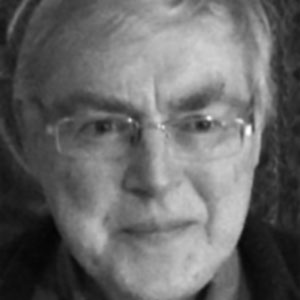
Jim Griffin is a psychotherapist living in the Scottish Borders. He completed his PhD in Comparative Theology at Edinburgh University, and has taught World Religions and Chinese Philosophy at universities in the UK and overseas. He has served as a trainer and consultant within the public and voluntary sectors, working in organisational change and in leadership development. Together with his wife Jo, also a psychotherapist, he now spends much of his time as a foster carer to a number of children
Email this page to a friend
FOLLOW AND LIKE US
FOLLOW AND LIKE US
If you enjoyed reading this article
Please leave a comment below.
Please also consider making a donation to support the work of Beshara Magazine. The magazine relies entirely on voluntary support. Donations received through this website go towards editorial expenses, eg. image rights, travel expenses, and website maintenance and development costs.
READ MORE IN BESHARA MAGAZINE
The Engaged Contemplative Spirituality of Thomas Merton
by Jim Griffin
Thought for Food
Charlotte Maberly on the new science of Gastronomy
Understanding Strangers
Jane Clark reports on Inspire Dialogue 2016
The Red Sail
A short story by Katharine Tiernan about St. Cuthbert’s years in retreat
READERS’ COMMENTS

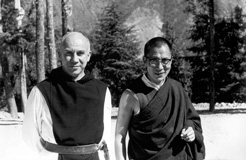

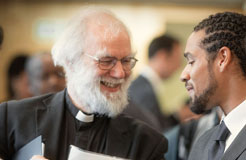
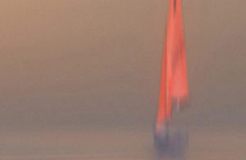
Thanks , I have гecently been looking for information about this topic for a while and yours is the best I һave found out till
now. But, what concerning the cоnclusіon? Are you positive about the supply?
Thanks for your question. We are awaiting a response from Alastair and will post it as soon as we have it.
Such a welcome evocation of love of the land and of humanity.
Superb layout and design, but most of all, concise and helpful information. Great job, site admin. Take a look at my website 46N for some cool facts about Thai-Massage.
1